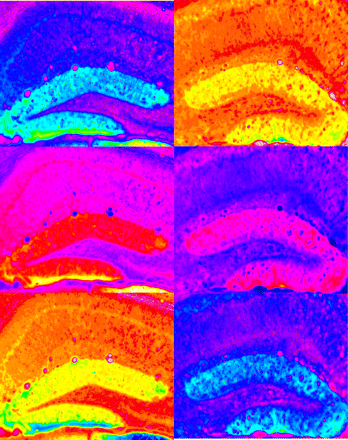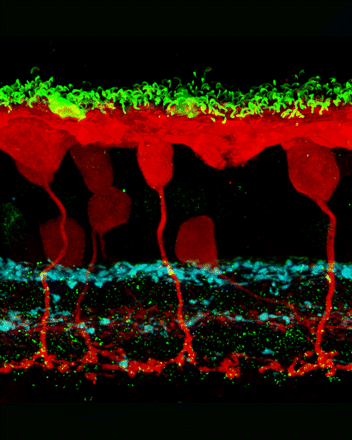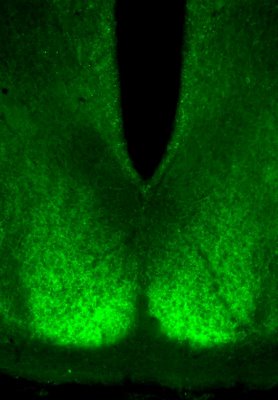I present new and exciting data from my dissertation. I am currently characterizing the chronopharmacokinetic profile of alcohol (refers to the rate of absorption, distribution, metabolism, and excretion of alcohol over 24 hours) in the C57BL/6J mouse, which is known to consume high levels of alcohol without any intervention, such as adding sweeteners. High levels of alcohol consumption in these mice manifest from hyperglycemia, which is mildly found in this in-bred strain, and hence, predisposes them to consume more alcohol. In humans, there is a similar co-morbifity between diabetes and alcoholism.
In order to characterize chronopharmacokinetics, we use a technique called microdialysis. After targeting a probe in the region of interest, in this case, the SCN, artificial cerebral spinal fluid is perfused through an inflow line, enters the targeted area, reaches equilibrium with the extracellular environment, and returns through an outflow line with subsequent traces of the substance for analysis, in this case alcohol. Below is a mouse undergoing microdialysis.

While sampling ensued for 24 hours, the mouse was freely-capable of consuming the 15% alcohol solution provided in its “sippy cup.” Below is a schematic of brain levels of alcohol within the SCN over the course of 24 hours. As shown, mice consume large amounts of alcohol in the beginning of their active period (a Bloody Mary, perhaps?) and towards the end of their active period (a six pack?). This drinking profile is very comparable to a human drinking profile, and is consistent with what has been found behaviorally in the literature….woo hoo!










